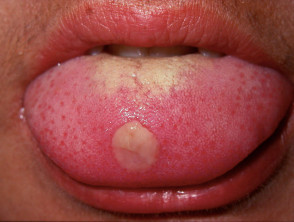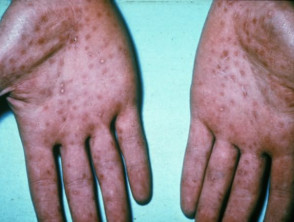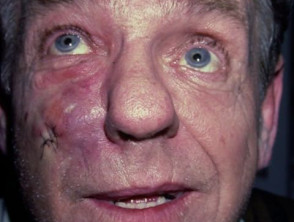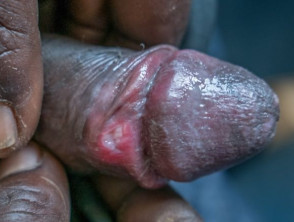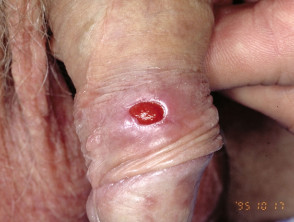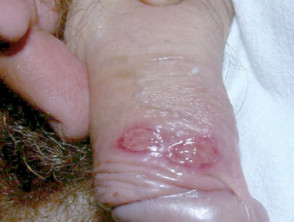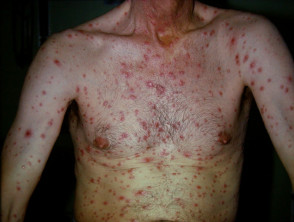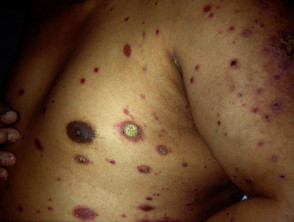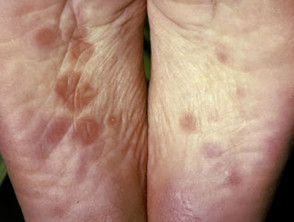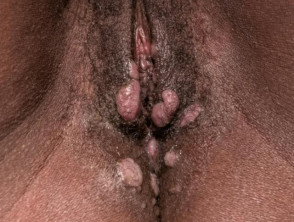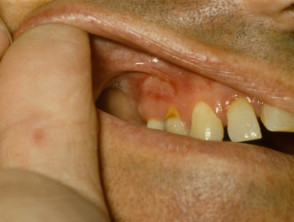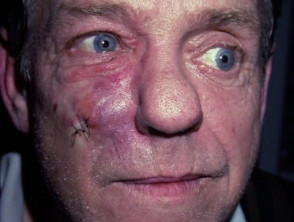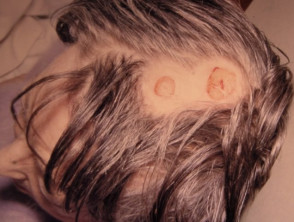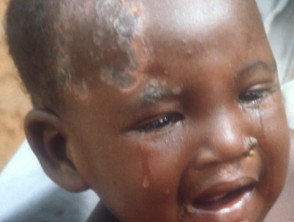What is syphilis?
Syphilis is a sexually transmitted infection caused by the spirochete Treponema pallidum. Syphilis can cause many signs and symptoms similar to other diseases, including human immunodeficiency virus (HIV), and thus is nicknamed ‘the great imitator’.
Syphilis has symptomatic and asymptomatic stages. If left untreated, syphilis can have significant consequences to the infected individual (long-term neurological and cardiac disease), in pregnancy (stillbirth and congenital infection), and to public health (spread in the population).
Syphilis
Who gets syphilis?
Syphilis is transmitted sexually from person to person, either by direct contact with syphilitic ulcers or by infected blood through microtrauma during sexual intercourse. Syphilis ulcers occur most commonly on the genitals and on the anal area, but can also occur on the lips or mouth. Hence, sex in any form — vaginal, anal, or oral — is the main way of passing syphilis from one individual to another. Syphilis also transmits vertically (infected mother to fetus) during pregnancy. Another potential route of transmission is needle sharing (eg, intravenous drug use).
Reported cases of syphilis increased in New Zealand and worldwide over the last decade, particularly among men who have sex with men (MSM). Most recently, a resurgence is being seen in the heterosexual population. This is a particular concern as untreated syphilis in pregnancy can have serious health implications for the mother, the pregnancy, and the unborn child.
What are the clinical features of syphilis?
Once infected with syphilis, an incubation period of 10–90 days (average 21 days) ensues before signs become apparent. Untreated syphilis passes through distinct clinical (symptomatic) stages as well as latent (asymptomatic) stages. During latency, diagnosis can only be made by serology. During the clinical stages, signs and symptoms of syphilis differ according to the stage — primary, secondary, or tertiary — as described below.
Primary syphilis
Primary syphilis is characterised by chancre(s) at the point of entry of the T. pallidum spirochete. T. pallidum uses its spiral shape to twist into the skin. A painless ulcer results.
- Typically, a solitary, small firm red painless papule on the genital area quickly becomes a painless ulcer with a well-defined margin and an indurated base.
- Multiple chancres occur in 30% of cases.
- The initial ulcerated chancre may go unnoticed, particularly if hidden inside the vagina, cervix, mouth, or on the anal region.
- Non-tender lymphadenopathy might occur in the region of ulceration (eg, inguinal lymphadenopathy in ulcers on the genitals and cervical lymphadenopathy with an oral ulcer.
- The ulcer usually heals without treatment within a few weeks.
Syphilis: primary chancre
Secondary syphilis
Secondary syphilis is a generalised infection. Secondary syphilis is characterised by rash and systemic symptoms, during which the patient is very infectious. If the patient is untreated, these symptoms will eventually resolve over a number of weeks, but they can recur.
- Untreated, 25% of patients develop secondary syphilis within three months (average six weeks) after the initial chancre.
- Syphilis is a multisystem infection and the patient is very infectious during this stage.
- Systemic symptoms may include fever, headache, malaise, myalgia, arthralgia, and lymphadenopathy.
- Other affected organs can include liver, kidneys, central nervous system (cranial nerve palsies, meningitis), joints, and eyes (resulting in visual impairment).
Cutaneous features of secondary syphilis
- A non-itchy rash is present in 90% of patients with secondary syphilis
- The rash might be subtle or might appear as rough, red or reddish-brown papules or plaques
- The rash occurs typically on the trunk and frequently affects palms and soles
- Rarely, the rash presents as a cluster of erythematous papules around a central scaly plaque, resembling a flower; this floral morphology is described as ‘corymbose’ syphilis
- Patchy hair loss (alopecia) can occur
- Mucosal surfaces — such as inside the mouth, throat, genital area, vagina, and anus — can become raw and red (mucous patches)
- Greyish-white, moist plaques called condyloma lata occur in the groin, inner thighs, armpits, umbilicus, or under the breasts
Rash of secondary syphilis on trunk and limbs
Secondary syphilis involving flexures and mucosa
Latent syphilis
Between the secondary and tertiary clinical stages of syphilis, many years of latency ensue. The latent years are subdivided into early and late. During latency, the patient is asymptomatic with no signs on clinical examination. Therefore, continued syphilis infection will only be found by positive treponemal antibody tests.
Early latent syphilis (first two years)
The patient is very infectious.
- Syphilis infection can pass to sexual partners.
- Syphilis infection can pass from a pregnant woman to her fetus.
Late latent syphilis (after two years)
Transmission of syphilis occurs only specific circumstances.
- The patient is non-infectious to sexual partners.
- Syphilis infection can still pass from a pregnant woman to her fetus.
Tertiary syphilis
Tertiary syphilis develops decades after the initial infection.
- Late signs and symptoms can develop 20–40 years after initial infection in up to one-third of untreated cases.
- The untreated infection can lead to endarteritis, and complications include gumma, cardiovascular, and neurological disease.A gumma is a solitary granulomatous lesion with central necrosis. Gummas typically occur on the skin or bone but can be found anywhere:
- Skin gummas can be painless
- Gummas in long bones cause a deep, boring pain that is worse at night.
- Cardiovascular disease is a rare complication. The aorta is the most likely organ affected and becomes dilated, resulting in aortic aneurysm and aortic valve regurgitation.
- Neurosyphilis can present as meningovascular disease (endarteritis leading to ischaemic stroke), as general paresis (neuronal loss in the cortex leading to progressive dementia), and as tabes dorsalis (wasting away of the spinal cord).
Tertiary syphilis
Congenital syphilis
Untreated maternal syphilis can lead to miscarriage, stillbirth, or congenital infection. Many infants with congenital syphilis will be asymptomatic at birth. Congenital syphilis is divided into early and late stages.
Early congenital syphilis (during the first two years of life)
In the first few weeks of life, the effects to the infant resemble secondary syphilis with a multi-organ infection.
- Maculopapular rash, vesiculobullous lesions, mucous patches, condyloma lata, rhinitis (inflamed mucous membrane in the nose causing snuffles).
- Other affected organs include the bones (osteochondritis), kidney (glomerulonephritis), liver (hepatosplenomegaly), and lymph nodes (lymphadenopathy).
- Neurological, ocular, and haematological involvement also can occur.
Congenital syphilis
Late congenital syphilis (after two years of age)
Late congenital syphilis presents similar to the tertiary gummatous syphilis in adult infection with chronic, persisting inflammation.
- This chronic infection often affects the eyes (interstitial keratitis), ears (deafness), bones, joints, and central nervous system.
- Characteristic signs include Hutchinson incisors, mulberry molars, typical facial appearance (frontal bossing, saddle nose), bowed sabre shins, and swollen knees (Clutton joints).
What is the differential diagnosis of syphilis?
The differential diagnosis for syphilis depends on which of its many possible clinical features are present.
The differential diagnosis for ulcers of primary syphilis
- Genital ulcers: genital herpes, trauma, cancer; and less commonly, tuberculosis, and chancroid
- Anal ulcers: genital herpes, anal fissure, bacterial infections, trauma, and inflammatory bowel disease
- Mouth ulcers: herpes simplex (cold sore), aphthous ulcers, and trauma.
The differential diagnosis for rash of secondary syphilis
How is syphilis diagnosed?
The diagnosis of syphilis is made from clinical history and physical examination, supported by laboratory and serological testing.
Syphilis can be diagnosed by demonstrating T. pallidum spirochetes in samples from infected lesions or lymph nodes. Spirochaetes can be identified by dark-field microscopy or by treponemal polymerase chain reaction (PCR) testing. These tests are not always readily available to the diagnosing clinician.
Skin biopsy might or might not show characteristic histopathological features. [See Syphilis pathology]
Serological testing to detect antibodies produced from treponemal infection is the most common test used to diagnose infection. Serological testing cannot distinguish between different types of treponemal infection (yaws, pinta, syphilis) or the duration of infection. Reactive treponemal tests will remain positive lifelong, regardless of treatment or disease activity.
The treponemal antibody tests can be divided into non-specific or specific tests. Which test is used depends on what is available at the local laboratory. The non-specific tests include:
- Venereal disease research laboratory (VDRL)
- Rapid plasma reagin (RPR).
The specific tests include:
- Enzyme immunoassay (EIA)
- Treponema pallidum haemagglutination (TPHA)
- Treponema pallidum particle agglutination assay (TPPA).
The sample is screened with a primary test (commonly EIA or TPHA) that detects IgG and IgM and confirmed with a different treponemal test. For example, a positive EIA screen is confirmed with a positive TPHA.
After confirmation, the sample is evaluated for the serological activity of the infection by the RPR/VDRL test.
- RPR/VDRL titre > 16 indicates active disease.
- RPR/VDRL titre < 16 does not exclude active infection but is more consistent with late latent infection or with treated infection.
The patient’s history is therefore important for interpretation. RPR/VDRL titre is also used to monitor the effectiveness of treatment.
After high-risk sexual encounters, repeat screening is advised at both six and 12 weeks post-exposure, as initial serological tests can be negative in primary syphilis. Serological tests are always positive in secondary syphilis but beware of the possibility of the prozone effect, which can lead to a false negative. The prozone effect occurs when high antibody titre interferes with the formation of the antibody-antigen lattice, which is needed to see a positive flocculation test.
False-positive serological tests occur, particularly in autoimmune disease, injecting drug use, pregnancy, and older age, but it is important to obtain a detailed history, test the sexual partner, and follow up with repeat testing, in order to ensure that the suspected false-positive result is truly false.
Other tests that might be required particularly if neurological signs and symptoms include computed tomography (CT), magnetic resonance imaging (MRI), and cerebrospinal fluid (CSF) exam.
A full sexual health screen should be carried out, including — most importantly — HIV testing.
What is the treatment for syphilis?
Penicillin by injection is still the mainstay of treatment for all stages of syphilis.
- Infectious syphilis (primary, secondary, early-latent) requires a stat dose of benzathine or procaine penicillin.
- Non-infectious syphilis (late latent) and neurosyphilis require longer courses of benzathine or procaine penicillin.
Other antibiotics are less reliable than penicillin, but tetracyclines or cephalosporins can be used in patients who are allergic to penicillin. [See Cutaneous adverse reactions to antibiotics] A pregnant woman who is allergic to penicillin should first be desensitised and then treated with penicillin anyway.
Treatment failures can occur at any stage of the infection, so close follow-up is important, with repeated serology tests for one to two years.
All sexual activity should be refrained from until all syphilis sores or lesions are completely healed and treatment is completed.
Partner notification and management are extremely important to prevent reinfection and to prevent spread in the community. Guidelines are available to guide the clinician on how far back to trace with each stage.
Can syphilis be prevented?
There is no vaccine for syphilis.
Syphilis can be acquired repeatedly; antibodies and treatment do not protect against a new infection.
If you think you are infected, stop all sexual contact and see your doctor or sexual health clinic. Notify all sexual contacts immediately so they can be checked for infection and treated appropriately.
Other measures to prevent the spread of syphilis include:
- Limiting the number of sex partners
- Using condoms
- Regular blood tests, if sexual behaviour is high-risk.
What is the outcome of syphilis?
Early treatment of syphilis has a very good outcome and prevents later complications. Delay of treatment until advanced stages can leave irreversible consequences for example, neurological or problems with vision.
